Franciscan Missions in the Sierra Gorda
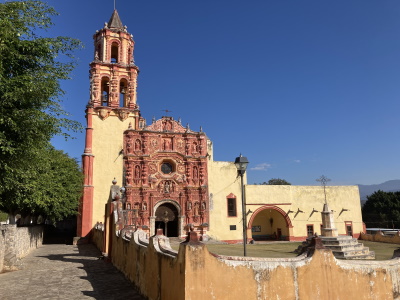
The Franciscan Missions in the Sierra Gorda of Querétaro are examples of the mid-18th century second phase of evangelization of Mexico.
They were founded by missionaries of the Franciscan Order on their way to northern Mexico. The churches are known for their richly decorated façades, which were the joint creative efforts of the missionaries and the local indigenous groups.
Community Perspective: Set in the beautiful surroundings of the Sierra Gorda, all 5 missions are worth a visit for their ornate decoration and the village of Tancoyol gets an extra thumbs up for its traditional way of life. Els has described getting to the missions on public transport.

Map of Franciscan Missions in the Sierra Gorda
Community Reviews
Clyde

I visited all 5 Franciscan Missions in the Sierra Gorda in January 2022 by rental car. By departing early from Queretaro, we managed to avoid most of the heavy buses, trucks and trailers which can slow you down quite a bit going uphill through the several hairpins winding through the Sierra Gorda. Before heading up to the Sierra Gorda, we stopped en route to visit the picture perfect former tWHS and pueblo magico of Bernal de la Peña.
I used the pueblo magico of Jalpan as my base for 2 nights to cover all 5 Franciscan missions which make up this WHS. Although they are all quite similar, I really enjoyed spotting their suttle differences and their natural surroundings. These types of serial location WHS (such as the Churches of the Troodos Mountains in Cyprus, the Wooden Churches of Southern Malapolska in Poland, the Tserkvas in Poland/Ukraine, the Wooden Churches in the Carpathians (Slovakia), the Val de Boi Churches and the Asturian Monuments in Spain, etc.) are among my favourite experiences while "hunting" for WHS and this one was no exception either.
The Spanish domination efforts in the region, the last to be conquered, included evangelization efforts, many of which failed before the mid 18th century. During the 16th and 17th century, there were attempts to evangelize the Sierra Gorda by the Augustinians, Franciscans and Dominicans but all initial missions were destroyed by the indigenous peoples. In 1740, the colonial government decided to exterminate indigenous resistance here to secure trade routes to Guanajuato and Zacatecas. This was accomplished by Jose de Escandon, whose expedition culminated in the Battle of Media Luna, defeating the Jonaz and Ximpeces. The military pacification of the area by Jose de Escandon in the 1740s allowed for the building of permanent missions in the heart of the Sierra Gorda. However, the five Franciscans missions accredited to Fray Junipero Serra were built in Pame territory, as these people were more accepting of Spanish domination. The Spanish decided to burn original Pame villages and resettle the population around missions for better control. Those who did not submit either committed suicide or went to live in the mountains. The placement of the missions had the purpose of dividing the heart of the Sierra Gorda and to open roads into San Luis Potosi.
Fray Junipero Serra spent eight years on the project of building the missions until 1770, when a number of historical events, including the expulsion of the Jesuits, forced the abandonment of the missions and Serra moved to California. From then until the late 20th century, the complexes suffered abandonment, deterioration and damage. This was especially true during the Mexican Revolution with many churches in the region sacked and a number of figures on the facades of these Franciscan missions "decapitated" during the fighting.
The main feature of these churches is the ornate decoration of the main portals, although there is decoration on the bell towers and in some churches, on other areas as well. This decoration is known as "Mestizo Baroque" or "Mestizo architecture" according to INAH. The ornate decoration is primarily aimed at teaching the new religion to the indigenous peoples in the open, a bit like the capellas abiertas of the Popocatepetl monastries, but unlike even the Baroque works further south, indigenous influence is obvious as Serra's idea was to demonstrate a blending of cultures rather than complete conquest. One element is the use of red, orange, and yellow, including pastel shades, and native sacred figures such as the rabbit and jaguar. The mission churches have a single nave, covered by a cannon vault, but each has its own peculiarities, especially in the portals.
Arriving in the afternoon, the mission's facade in Jalpan was not lit well so I decided to drive on the Ruta de los Misiones to Conca (35km away towards Arroyo Seco) which was in full glory in the afternoon sun. The San Miguel Conca Mission was the first one of the five inscribed missions to be constructed in 1750 (and finished in 1754 according to an inscription located inside the church) by Fray Junipero Serra for Jose Antonio Murguia so it also made sense chronologically to start with it. It is also the smallest one of the missions and the most austere but then it has the greatest amount of indigenous traits. The Crossed Arms of the Franciscan Order lies at the centre of the facade beneath a squarish diamond shaped window. Above the window lies a statue of Archangel Michael to whom this mission is dedicated. The decoration features large flowers, foliage and coarse figures in indigenous style. It is also distinguished by an image of the Holy Trinity at the crest along with a rabbit (a Pame symbol) and a double-headed eagle. The lower statues of Saint Francis of Assisi and Saint Anthony of Padua are decapitated like most of the lower and hence easier-to-reach statues of these missions, while the higher ones are still intact. Like in most of the missions, there are false marble decorations both on the portal as well as inside the church. A highlight of the church's interior is its old baptismal font. The mission in Conca is surrounded in nature and close to several springs and waterfalls as well as a millenial tree. The UNESCO WHS plaque is oddly placed outside the mission's perimeter to one of its sides near a Camino Real pilgrims' bell.
Very early the next morning (and also the following morning before leaving from Jalpan), I visited the mission of Jalpan and afterwards headed to the small museum with cute models of each mission. Once again, the UNESCO WHS plaque is oddly placed outside the mission's perimeter to one of its sides near a statue of Fray Junipero Serra. This is the largest of all 5 missions and was the second to be built by Fray Junipero Serra. It is dedicated to Saint James the Apostle and has a lovely decorated octagonal belfry. It has similar features to the Conca Mission but a bigger central window and a conch-shaped entrance. It has intricate flower decorations everywhere and all the statues are intact except the top one of Saint James which in 1898 was substituted with a classic clock. The statue of the Virgen de Guadalupe, Mexico's patron saint, and that of the Virgen del Pilar, Spain's patron saint, in their conch-shaped niche are worth looking out for. There's also a small central depiction of the five stigmata, another recurring image and symbol in other missions.
Next I drove on the main road towards Landa de Matamoros which is only around 22 km away. The Santa Maria del Agua de Landa Mission (morning light is best) is one of the most elaborate, full of many different details and colours, and is dedicated to Our Lady of the Immaculate Conception. The UNESCO WHS plaque is just in front of its yellow perimeter entrance as is the case also for the Missions of Tilaco and Tancoyol. It was the last of the missions to be built. The central window of the portal is octagonal with the recurring symbols of the 5 stigmata as well as that of the Franciscan Order on each side of the window. It has two particular figures of mermaids having indigenous features, as well as two beautiful medallions depicting Jesus Christ's flagellation and descent from the cross.
From Landa, we headed towards the Mission of San Francisco del Valle de Tilaco which is 26 km away, 16 km of which are in an uphill winding road apparently leading only to Tilaco (late afternoon is best for photography)! It must be said that together with Conca, the Mission of Tilaco has the best natural surroundings with excellent views of the green Sierra Gorda hills and mountains and is rich in avifauna. It also has the best decorated perimeter wall of all 5 missions, almost like that of a wat in Luang Prabang. It is the mission I enjoyed the most for the warm and fun experience offered by its caretaker. She was overjoyed to see foreigners come so far "only" to admire the Mission and invited me to visit the sacristy with a double-headed eagle painted on its ceiling and climb up the belfry for a closer view of the tower's statues and a lovely panoramic view of the mission perimeter and its natural surroundings. The crumbling precarious steps leading up to the church bells were full of bat and pigeon droppings but it was definitely worth the effort and risk. Meanwhile the caretaker started to hang the Father's ceremonial clothes to dry and as I approached the room where she was doing the washing to thank her, I noticed the facsimile of the UNESCO WHS inscription certificate, which I also found later on at the sacristy of the Tanyacol Mission. The Tilaco Mission is dedicated to Saint Francis of Assisi and has a number of different features from the other missions. First of all, it is built on a gradient. The bell tower is separated from the main nave of the church by the baptistery and structurally functions as a buttress for the church. Tilaco is probably the best preserved of the five missions and has the most subtle ornamentation on its facade and its interior (it has a few remnants of mural paintings inside). Its facade is composed of three horizontal and three vertical partitions, with the Franciscan coat of arms and a "caged" diamond central window above it which are prominent over the main entrance. One distinctive decorative element are the ears of corn and four mermaids with indigenous features. Tilaco has the best conserved atrium corner chapels called "capillas posas", which were used for processions. It also has a quaint courtyard, bigger than the one in Jalpan but smaller than the one in Tancoyol.
Last but not least, I drove another 50 km or so to the Mission of Nuestra Señora de la Luz in Tancoyol (best light for photography is in the afternoon). It probably has the most over-the-top decorations and representative iconography of the Mestizo Baroque. Apart from the recurring Franciscan Order coat of arms and the 5 stigmata, it also has images of the Jerusalem Cross and that of the Dominicans' Calatrava Cross representing redemption. It also has a large sculpted cross on top venerated by two angels and peculiar flowery decorations, two of which are made up of indian headdress plumes. The whole facade is full of ornamental vegetation and ears of corn. Indigenous elements are also found in the church's interior, with an image of a jaguar and a person with Olmec features. There is a neat baptismal font inside the base of the belfry and this mission has also the most elaborate cupola interior. Of the 5 missions, Tancoyol is also the most laid back, with the majority of its residents still using their horses as their main means of transport or their tractors.
Photos: Conca Mission facade (top left), Tancoyol Mission facade (top center), Sierra Gorda scenery (top right), Landa Mission facade (bottom left), View from Tilaco Mission belfry (bottom center), and Jalpan Mission facade (bottom right).
Els Slots

The Sierra Gorda Missions still are doing very well in 2022. When the sun shines on the facades of the churches, they really glow. Be sure to be there at the right moment of the day though: Jalpan and Landa are best in the morning, while Conca and Tilaco (pictured) are better in the afternoon. There’s a (free) regional museum also in Jalpan which has replicas of the facades, which I found worth a look for the details.
I visited 3 of the missions on public transport, and have some practicalities to share:
Getting there and away
Jalpan is the natural hub for visiting the Sierra Gorda. I took a direct bus there from Mexico City Norte with the company Coordinades. They have 4 buses daily. It takes 7 hours. On the way out I went via San Luis Potosi (from where I travelled on to the next WHS, Zacatecas). Also 7 hours on a slow bus from Grupo Vencedor.
Getting around
Grupo Vencedor is the regional bus company of the area. Nothing fancy, but you’ll see a bus passing by at least once an hour. It will easily get you to Landa and Conca from Jalpan. Here is their schedule (no pre-booking).
Tilaco and Tancoyol lie some 10-20km from the main road. I took a taxi from Landa to Tilaco (500 pesos return inc waiting time). The taxi driver also wanted to take me to Tancoyol, but to fork out another 20 EUR or so for a similar church I found too much.
Read more from Els Slots here.
Zoë Sheng
Chinese-Canadian - 25-Dec-19 -

This will be a short review, more of an update maybe because there are already many reviews but nothing since 2014. The Sierra Gorda biosphere alone is worth visiting so the churches are maybe more of a bonus. The windy roads don't make for a fun ride if you have to deal with trucks slowing down the traffic to 20km/h and little chances to overtake most of the way. Mexican drivers can be very patient and stick behind the truck for a loooong time.
They look in good condition nowadays, almost as if they're new. I visited two of the churches on a Sunday, Jalpan was super busy and the church closed for celebrations. Landa was deserted and open. One can spend time inside but there honestly isn't much to see but for the ceiling decorations so I didn't miss much at the first church? The facades are what make the churches unique. So I stare at them for a while to see what's on display before moving on. Beautiful.
Alessandro Votta
We've visited 4 out of 5 missions inscribed in this WHS during our Queretaro trip on October 2014. The missions are very similar and they show some of the characteristics of the about 2 centuries older missions around Popocatepetl, like the open chapel at the side of the church.
Luckily for us the restoration project seen by Paul Tanner is over, and all the facades look like they've just been cleaned (they are protected only with a net, probably against birds). It took about 3.5 hours driving from Queretaro to Jalpan. We first visited Mission Conca, which shows many mesoamerican elements in the facade (climbing lions, "indio" faces, many natural elements). Mission Jalpan shows more traditional catholic elements (only saints and natural elements). Mission Landa was the most spectacular for us, showing both religious and mesoamerican elements. It also shows the representation of 2 religious sitting with a desk (one each side of the facade), with a 3-D effect which we found amazing. Mission Tilaco had the particular feature (as in Landa) of the sirens (marmaids) on the facade. We only missed the mission of Tancoyol due to time constraints. Out of the 4 missions visited, only Mission Jalpan is at the center of a very active urban center. We found Jalpan as a true gem in the Sierra (it's indeed a so-called Pueblo Magico). The Sierra Gorda itself it's spectatular with the many natural wonders, its aspect varying from desert (with many cactus) to forest to jungle. We loved this 2-day trip from Queretaro!!
V Andersen(artist)
We visited the five missions in the Sierra Gorda area in 2007. We are from Lompoc, California, USA. We have visited all of the missions in California and other states. We flew into Quanajato airport, rented a car, then drove to Quetero for 2 days. We drove from there to all five of the Sierra Gorda Missions...stayed one night in Jalpan. We continued on to Xilitla and the Las Posas...the Gardens of Edward James, staying in his home(El Castillo). Was a great trip...driving back to San Miguel Allende for a few days, which we have visited before...2nd stay at Casa de la Cuesta. Overall a great & memorable trip. We have seen all the California missions and several in Arizona, New Mexico and Texas...so we were on a quest.
Solivagant

If (as we did) you travel round Central Mexico on a “World Heritage quest” you are going to look at a lot of churches, cathedrals, missions, convents and monasteries dating from the 16th to the 18th century! The problem for the non expert (which includes us!) is what to make of all this in terms of its architectural and historical significance. We dutifully visited 4 of the 5 Sierra Gorda missions, giving them half a day within a very crowded schedule. The visits were pleasant enough but only now on our return home can I fit them into the overall picture.
The Sierra Gorda is wild, relatively empty country and a World Biosphere Reserve “for its eco-diversity due to its … position at the meeting point of the Nearctic and Neotropical bioregions. (It) presents great physiographic complexity, with altitudes ranging from 300 meters above sea level … (at) Jalpan … to 3,100 meters … at the summit….”. The drive from the city of Queretaro, set in the hot plains of Mexico’s “bajio” to the Sierra Gorda Missions takes you to the summit referred to above and then down to the town of Jalpan. With stops, for instance, at the Tentative List site of “Bernal”, it will take you best part of a half a day on a hard and twisting drive.
For the sort of geographic reasons implied above and because of continuing conflicts over silver etc this land wasn’t pacified and settled until much later than other parts of Mexico and maintained a dispersed, partly nomadic and un-converted population. Later on in our trip we were to visit the inscribed Missions “on the slopes of Popocatepetl” (see my review). Those were being created as early as 1533. Yet the missions in the Sierra Gorda were not set up until around 1750/60. I certainly hadn’t understood the long timescale involved in the evangelization of Mexico’s interior and didn’t at the time I was there. Yet knowledge of that is key to understanding the Sierra Gorda Missions and their architecture!
So, to see some/all of the Missions, first make for Jalpan. It has a couple of hotels and we found the “Hotel Mision” perfectly acceptable (if a bit noisy). As its name suggests it is set right in front of the first of the Missions. We visited it both in the evening and the following morning but then decided to miss out Mission Conca situated about 25 kms north of Jalpan on route 69 towards Rio Verde. Instead we continued west along route 120 (the road from Queretaro) first to Mission Landa and then further along by return side trips to Mission Tilaco (about 16kms south off the main road) and Mission Tancoyol (about 25 kms north off the main road). From there we were making for Xilitla and the coast. Leaving Jalpan at 9am we reached Xilitla at 1pm.
Unfortunately all 4 of the missions we saw (Mar 2008) had their baroque façades partly obscured by scaffolding (photo 1) – it appears that a program of restoration of all of them is in progress. Whilst this hindered photography it didn’t totally prevent appreciation of the wonderful indigenous decoration and I can now review my photos in the light of additional study. All the missions were Franciscan and “naif” stucco work showing, what I understand to be the stigmata of St Francis, were a common feature on all the church facades (photo 2). The Fransiscans also built some of the “Popocatepetl missions” over 200 years earlier – notably Cuernavaca and Huejotzingo but to a very different style. Having experienced both, we can now see how the “imposed” fortress-like medieval architecture of the earlier was replaced by the innocence and beauty of indigeno forms in the later! Interestingly, the guy who built the Sierra Gorda Missions, Junipero Serra, went on to found San Diego (Yes “that” San Diego!) mission in California and was beatified in 1988. The mission interiors were all fairly simple – partly a reflection of the style but also a result of the anti-clericalism of Mexico’s Revolution which had led to the destruction of altarpieces etc. Outside we saw the “atria” which we were to come across later in the Popocatepetl monasteries – the large open air squares where the “Indians” would congregate for services. The importance of the decorated façade which looked out on this “congregation space” is now clear.
The villages in which the missions were set – especially the “cul de sacs” of Tilaco and Tancoyol (Jalpan and, to a lesser extent, Landa are small towns now) were particularly interesting. These will have grown from the first settlements created as the Franciscans persuaded groups of “Indians” to come in and set up huts around the missions - we found Tancoyol in particular very “Mexican” and enjoyed the atmosphere around the church and market.
In conclusion; it pays to do some studying beforehand when visiting WHS but the reality is that, until you have been, it is difficult to know what is going to be significant. I am pleased we managed to see both sets of Mexican WHS missions – and a bit more study and reflection on our return has helped increase understanding of each.
Community Rating
- : Anna Wludarska VisionMX123
- : Feldhase Alexander Lehmann
- : Alberto Rodriguez Gutierrez
- : Martina Rúčková Jean Lecaillon Hanming
- : Els Slots Solivagant Filip Murlak Ivan Rucek Clyde Svein Elias Zoë Sheng Roger Ourset Shandos Cleaver Mihai Dascalu Alejandro Lau
- : Wojciech Fedoruk
- : Randi Thomsen
- : Szucs Tamas
Site Info
Site History
2003 Inscribed
Site Links
Unesco Website
Official Website
Related
Connections
The site has 10 connections
Art and Architecture
Religion and Belief
Timeline
Trivia
WHS Hotspots
WHS on Other Lists
Visitors
52 Community Members have visited.
The Plaque
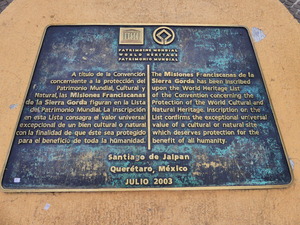 (photo by Clyde)
(photo by Clyde)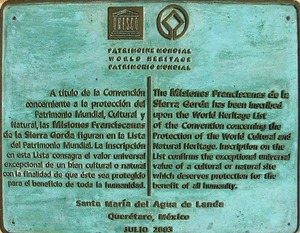 (photo by Solivagant)
(photo by Solivagant)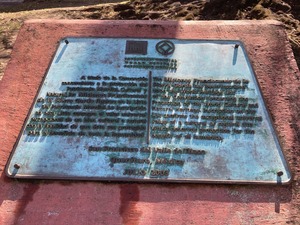 (photo by Els)
(photo by Els)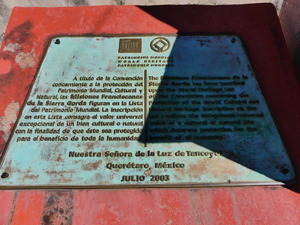 (photo by Clyde)
(photo by Clyde)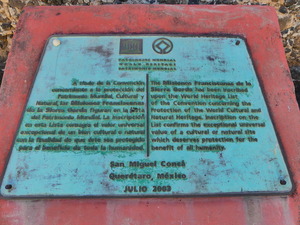 (photo by Clyde)
(photo by Clyde)